BMW 2 Series vs Mazda CX-30 – Differences & prices compared
Compare performance, boot capacity, efficiency and price at a glance.
Find out which car is the better choice for you – BMW 2 Series or Mazda CX-30?
Costs and Efficiency:
Price and efficiency are often the first things buyers look at. Here it becomes clear which model has the long-term edge – whether at the pump, the plug, or in purchase price.
Mazda CX-30 has a clearly advantage in terms of price – it starts at 25200 £, while the BMW 2 Series costs 39200 £. That’s a price difference of around 13937 £.
Fuel consumption also shows a difference: BMW 2 Series manages with 4.90 L and is therefore to a small extent more efficient than the Mazda CX-30 with 5.70 L. The difference is about 0.80 L per 100 km.
Engine and Performance:
Power, torque and acceleration say a lot about how a car feels on the road. This is where you see which model delivers more driving dynamics.
When it comes to engine power, the BMW 2 Series has a significantly edge – offering 530 HP compared to 186 HP. That’s roughly 344 HP more horsepower.
In acceleration from 0 to 100 km/h, the BMW 2 Series is significantly quicker – completing the sprint in 3.80 s, while the Mazda CX-30 takes 8.30 s. That’s about 4.50 s faster.
In terms of top speed, the BMW 2 Series performs distinct better – reaching 302 km/h, while the Mazda CX-30 tops out at 204 km/h. The difference is around 98 km/h.
There’s also a difference in torque: BMW 2 Series pulls decisively stronger with 650 Nm compared to 240 Nm. That’s about 410 Nm difference.
Space and Everyday Use:
Whether family car or daily driver – which one offers more room, flexibility and comfort?
Seats: Mazda CX-30 offers a bit more seating capacity – 5 vs 4.
In curb weight, Mazda CX-30 is hardly perceptible lighter – 1455 kg compared to 1560 kg. The difference is around 105 kg.
In terms of boot space, the Mazda CX-30 offers minimal more room – 430 L compared to 390 L. That’s a difference of about 40 L.
When it comes to payload, Mazda CX-30 slightly takes the win – 496 kg compared to 400 kg. That’s a difference of about 96 kg.
Who comes out on top?
Overall, the BMW 2 Series shows itself to be wins the duel decisively and secures the title of DriveDuel Champion.
It convinces with the more balanced overall package and proves to be the more versatile choice for everyday use.
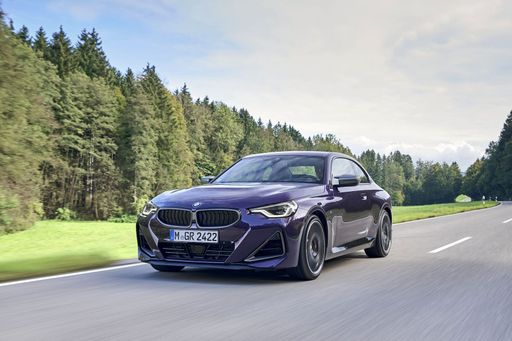
BMW 2 Series
BMW 2 Series
The BMW 2 Series embodies a perfect blend of dynamic performance and sporty elegance, making it a popular choice among driving enthusiasts. With its impressive handling and sophisticated design, it captures the essence of a modern compact coupe. Inside, the 2 Series offers a luxurious and driver-centric cabin equipped with cutting-edge technology, ensuring both comfort and connection on every journey.
details @ press.bmwgroup.com
@ press.bmwgroup.com
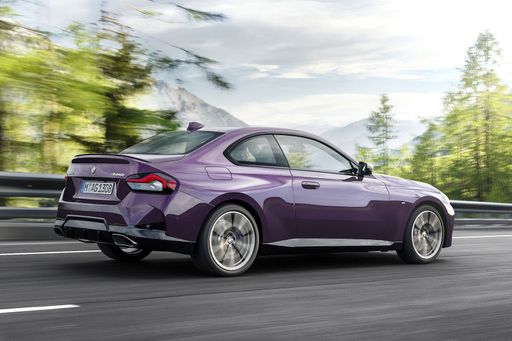 @ press.bmwgroup.com
@ press.bmwgroup.com
 @ press.bmwgroup.com
@ press.bmwgroup.com
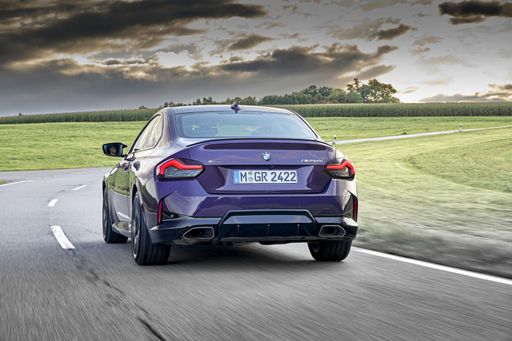 @ press.bmwgroup.com
@ press.bmwgroup.com
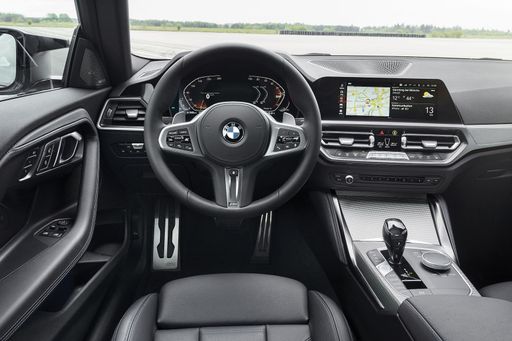 @ press.bmwgroup.com
@ press.bmwgroup.com
Mazda CX-30
The Mazda CX-30 effortlessly combines sleek design with a sense of adventure, making it an appealing choice for urban explorers and countryside enthusiasts alike. Inside, the cabin is thoughtfully designed, offering both comfort and cutting-edge technology to enhance the driving experience. Its performance on the road is agile, providing a smooth and engaging journey for drivers and passengers.
details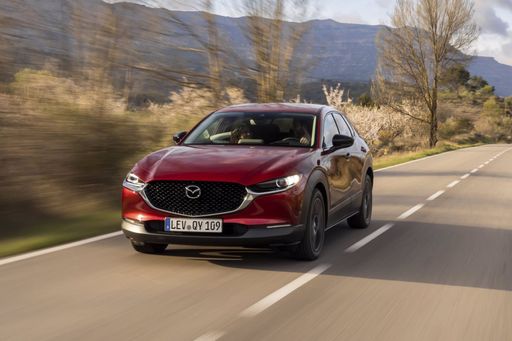 @ de.mazda-press.com
@ de.mazda-press.com
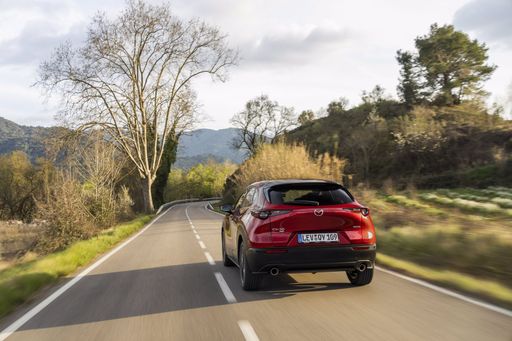 @ de.mazda-press.com
@ de.mazda-press.com
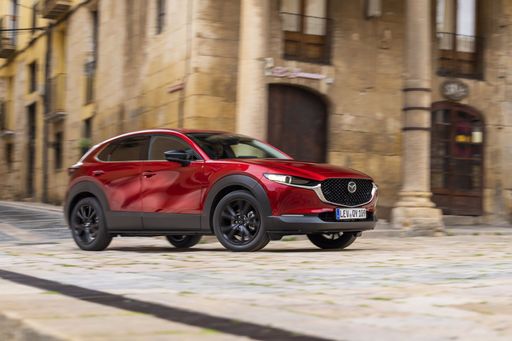 @ de.mazda-press.com
@ de.mazda-press.com
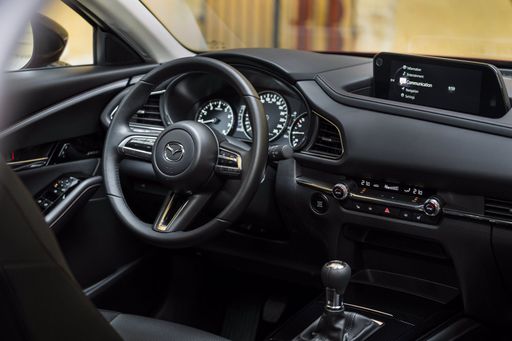 @ de.mazda-press.com
@ de.mazda-press.com

|

|
|
|
|
Costs and Consumption |
|
|---|---|
|
Price
39200 - 98600 £
|
Price
25200 - 36800 £
|
|
Consumption L/100km
4.9 - 10 L
|
Consumption L/100km
5.7 - 6.6 L
|
|
Consumption kWh/100km
-
|
Consumption kWh/100km
-
|
|
Electric Range
-
|
Electric Range
-
|
|
Battery Capacity
-
|
Battery Capacity
-
|
|
co2
129 - 226 g/km
|
co2
129 - 148 g/km
|
|
Fuel tank capacity
51 - 52 L
|
Fuel tank capacity
48 - 51 L
|
Dimensions and Body |
|
|---|---|
|
Body Type
Coupe
|
Body Type
SUV
|
|
Seats
4
|
Seats
5
|
|
Doors
2
|
Doors
5
|
|
Curb weight
1560 - 1830 kg
|
Curb weight
1455 - 1587 kg
|
|
Trunk capacity
390 L
|
Trunk capacity
422 - 430 L
|
|
Length
4537 - 4587 mm
|
Length
4395 mm
|
|
Width
1838 - 1887 mm
|
Width
1795 mm
|
|
Height
1390 - 1404 mm
|
Height
1540 mm
|
|
Max trunk capacity
-
|
Max trunk capacity
1398 - 1406 L
|
|
Payload
350 - 400 kg
|
Payload
458 - 496 kg
|
Engine and Performance |
|
|---|---|
|
Engine Type
Diesel MHEV, Petrol
|
Engine Type
Petrol MHEV
|
|
Transmission
Automatic, Manuel
|
Transmission
Manuel, Automatic
|
|
Transmission Detail
Automatic Gearbox, Manual Gearbox
|
Transmission Detail
Manual Gearbox, Automatic Gearbox
|
|
Drive Type
Rear-Wheel Drive, All-Wheel Drive
|
Drive Type
Front-Wheel Drive, All-Wheel Drive
|
|
Power HP
156 - 530 HP
|
Power HP
140 - 186 HP
|
|
Acceleration 0-100km/h
3.8 - 8.7 s
|
Acceleration 0-100km/h
8.3 - 10.3 s
|
|
Max Speed
224 - 302 km/h
|
Max Speed
191 - 204 km/h
|
|
Torque
250 - 650 Nm
|
Torque
238 - 240 Nm
|
|
Number of Cylinders
4 - 6
|
Number of Cylinders
4
|
|
Power kW
115 - 390 kW
|
Power kW
103 - 137 kW
|
|
Engine capacity
1995 - 2998 cm3
|
Engine capacity
1998 - 2488 cm3
|
General |
|
|---|---|
|
Model Year
2024 - 2025
|
Model Year
2025
|
|
CO2 Efficiency Class
D, E, G
|
CO2 Efficiency Class
D, E
|
|
Brand
BMW
|
Brand
Mazda
|
What drivetrain options does the BMW 2 Series have?
Available configurations include Rear-Wheel Drive or All-Wheel Drive.
The prices and data displayed are estimates based on German list prices and may vary by country. This information is not legally binding.
